Chemistry and sport
Soccer -
Association Football
Association football, commonly known as football or soccer, is a
sport played between two teams of eleven players with a spherical
ball. At the turn of the 21st century, the game was played by
over 250 million players in over 200 countries, making it the
world's most popular sport. Medieval football in the UK (where villages
would play each other with an unlimited number of players on a team)
appears to date back to the eighth century at least!
In association football, the
football or soccer ball, (according to whether the game is
referred to as "football" or "soccer") used in official matches
is a specific type of football standardised for size, weight, and
material and manufactured to the specifications of the Laws of
the Game, specifically Law 2.
Law 2 of the game specifies that the ball is an air-filled sphere
with a circumference of 68-71 cm (27-28 in), a weight 410-450 g
(14-16 oz), inflated to a pressure of 0.6 to 1.1 atmospheres
(59-108 kPa, 8.6-15.7 psi) "at sea level", and covered in leather
or "other suitable material". The weight specified for a ball is
the dry weight, as older balls often became significantly heavier
in the course of a match played in wet weather. The standard ball
is a Size 5 and this is used in official FIFA championships all
over the world. The football can be made from polyurethane which
gives a less soft material but still retains a good feel and is
much more durable.
The Science of Football
Early footballs began as animal bladders that could easily fall
apart if kicked too much. As time went on footballs developed to
what they look like today. This change in the design of footballs
was helped by the introduction of
rubber and the discovery
of
vulcanization. Today, technological research continues to aid the
change in footballs with improved performance.
The
oldest football still in existence, which is thought to have
been made circa 1540, was discovered in the roof of Stirling
Castle, Scotland, in 1981. The ball is made of leather (possibly
from a deer) and a pig's bladder. It has a diameter of between
14-16 cm (5.5-6.3 in), weighs 125 g (4.4 oz) and is currently on
display at the Smith Art Gallery and Museum in Stirling.
In 1863, the first specification for footballs were laid down by
the Football Association. Prior to this, footballs were made out
of inflated leather, with later leather coverings to help
footballs maintain their shapes. In 1872 the specifications were
revised, and these rules have been left essentially unchanged as
defined by the International Football Association Board.
Differences in footballs created since this rule came into effect
have been to do with the material used in their creation.
Footballs have gone through a dramatic change over time.
During medieval times balls were normally made from an outer
shell of leather filled with cork shavings. Another method of
creating a ball was using animal bladders for the inside of the
ball making it inflatable. However, these two styles of creating
footballs made it easy for the ball to puncture and were
inadequate for kicking. It was not until the 19th century that
footballs developed into what a football looks like today.
For the 1970 FIFA World Cup, Adidas introduced the Telstar. Like
all other balls in its time, the Adidas Telstar was completely
made of leather; however, unlike any other ball it featured 32
hand-stitched panels (12 black pentagons and 20 white hexagons),
creating the now-familiar truncated icosahedron for its design
and the roundest sphere of its time.
The 1970 ball was made of leather but by 1974 the football had a
"Durlast" polyurethane coating that provided waterproofing as
well as protection from damage such as scuffs and tears.
Only 20 Telstars were provided for the 1970 World Cup however an
estimated 600,000 replicas have subsequently been sold.
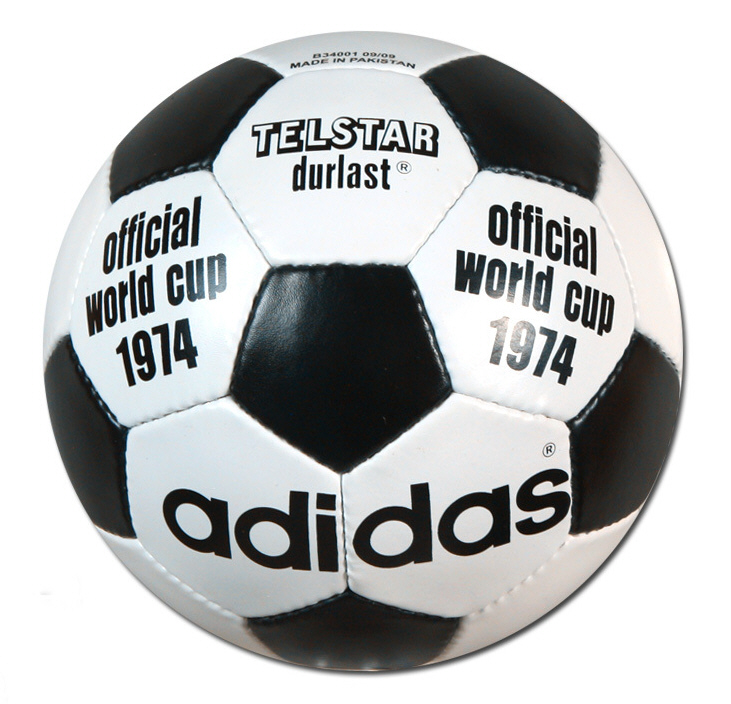
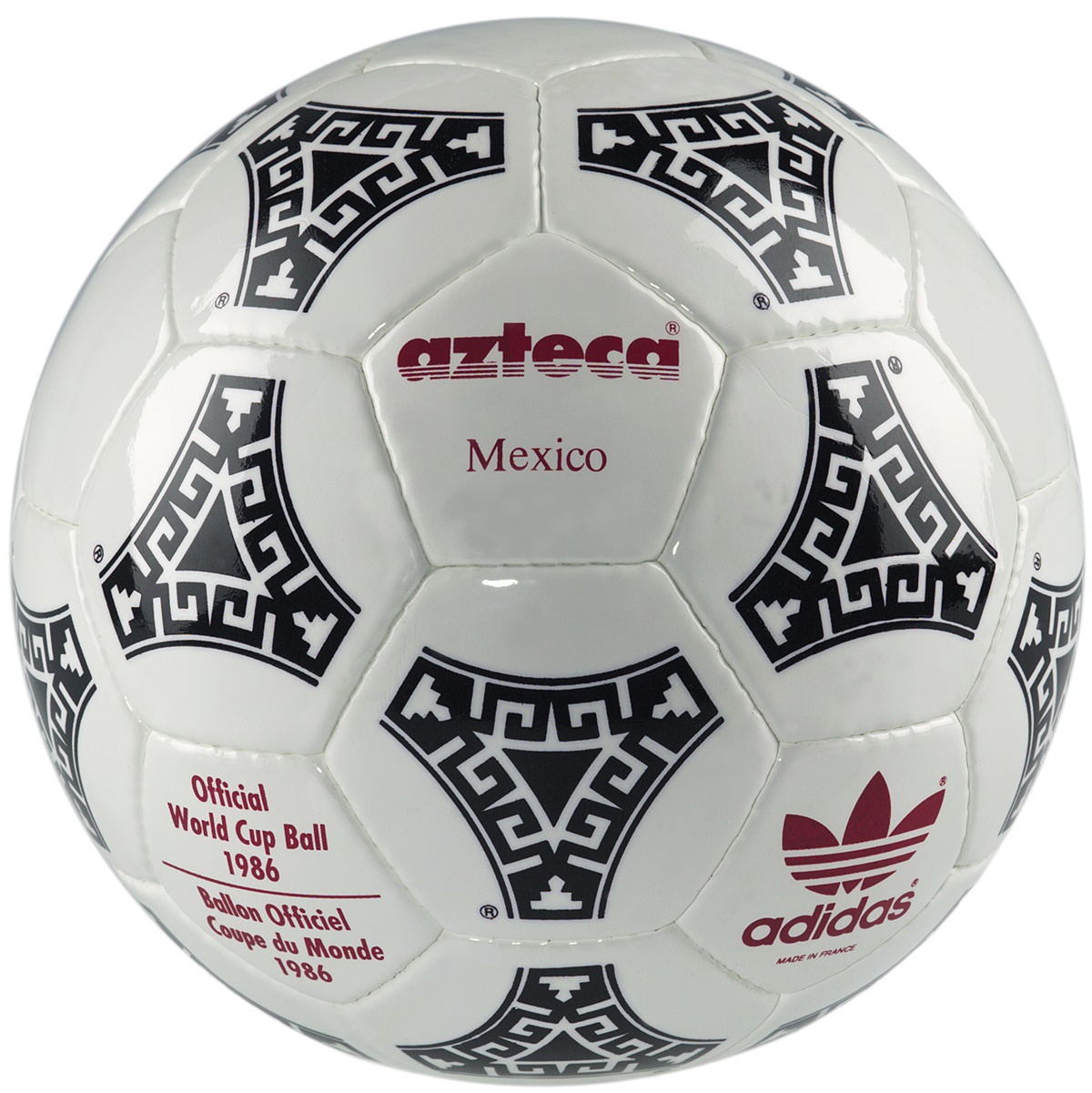
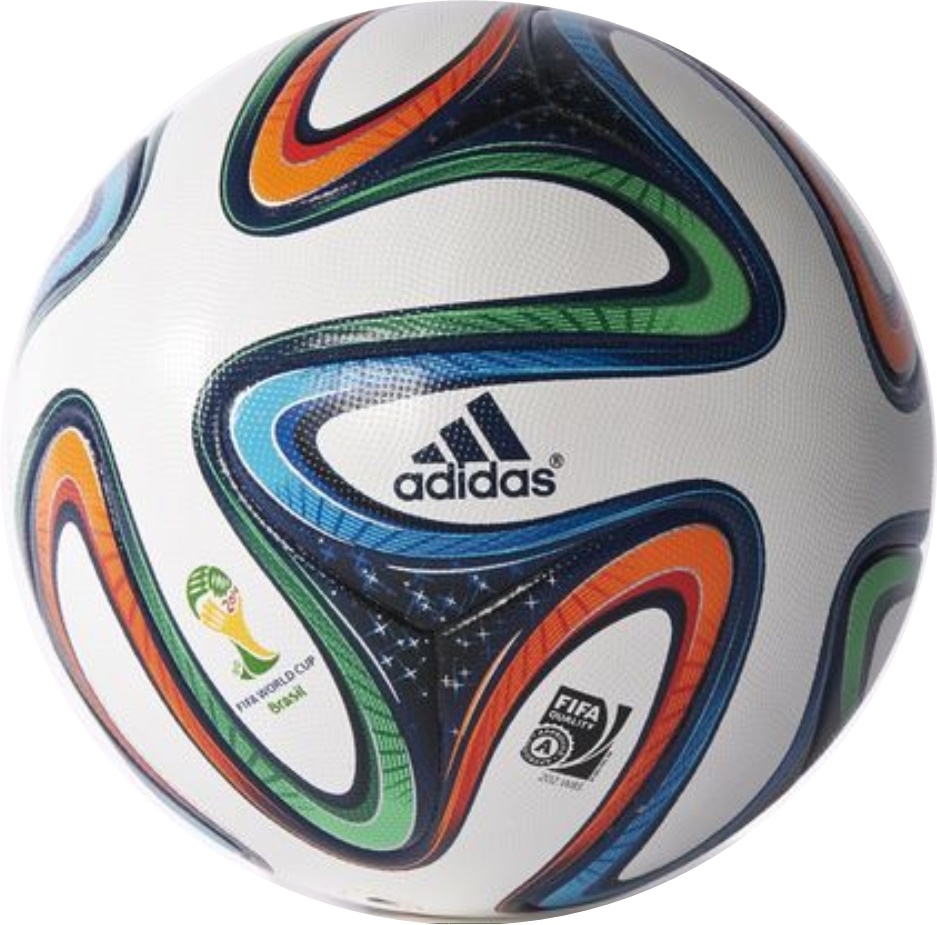
Adidas Telstar Durlast 1974, Azteca Mexico 1986 and Brazuca 2014 were the
official match balls of the FIFA World Cups.
The 1986 model was the first fully synthetic FIFA World Cup ball.
The 1990 Adidas model used in Italy introduced an internal layer
of polyurethane foam and was fully made of synthetic fibers. The
underneath layer included fabric coated with latex that prevented
tearing and maintained stability. Like earlier models the outer
design was based on art forms of ancient civilizations, this time
from the Italian peninsula.
The Adidas
ball used in Korea/Japan for the 2002 World cup had a glossy
finish on the outside, an innovation that has been an inspiration
for other balls and sports products since then. Called
"Fevernova" it was made of thicker inner layers that guaranteed
the accuracy of the ball's trajectory during flight. Fevernova's
improved syntactic foam layer, consisting of highly compressible
and extremely durable gas-filled micro-balloons, had remarkable
energy return properties.
To quote some PR related to the launch of the 2010 ball:
The Adidas
JABULANI
match ball used in the 2010 FIFA World Cup in South Africa featured
completely new, ground-breaking technology. Eight three-dimensional
spherically formed ethylene vinyl acetate and thermoplastic polyurethane
panels were moulded together, harmoniously enveloping the inner carcass.
The newly developed "Grip'n'Groove" profile provides the best players
in the world with a ball allowing an exceptionally stable flight and perfect
grip under all conditions. Comprising only eight, completely new,
thermally bonded 3-D panels, which for the first time are spherically moulded,
the ball is perfectly round and even more accurate than ever before.
For the 2014 World Cup the
Brazuca was constructed in an Adidas Pakistan factory and
details of its construction were
reviewed in ChemistryViews.
Surface Panels
The surface of Brazuca is made up of only six panels of absolutely identical
shape. Conventional soccer balls consist of 12, 16, or 32 panels stiched
together. Besides leading to perfect symmetry, the reduced number of panels
of Brazuca requires fewer seams. This means that the ball is more durable
and absorbs less moisture (only 0.2 %) which makes Brazuca lighter than
other balls when played on wet ground.
The six panels are bonded together using a patented thermobonding technology.
Skin
Brazuca has five polyurethane layers:
The outer layer of the skin comprises three compact layers of polyurethane
each with different thicknesses. They are responsible for the outstanding
resistance to external influences and abrasion, and for the ball's high
elasticity.
The innermost layer of the skin is an adhesion coating that connects the
textile substrate to the layers above. On top of this is a roughly 1 mm
thick polyurethane foam layer which is made up of millions of gas-filled
microspheres. This foam is highly elastic so that the ball, after being
deformed from being kicked, immediately returns to its spherical shape to
ensure an optimal trajectory.
Bladder
The bladder in the middle of the ball holds the air. In the Brazuca,
this is made from
butyl rubber, but it can also be made from
latex.
Both have their benefits: butyl rubber retains the air for a longer
period of time, whilst latex provides better surface tension.
Butyl rubber can also be found in the valve through which air can be pumped
into the ball, where it aids air retention. Silicone valves can also be used.
Australian Football League (AFL)
Note that the AFL (founded as the Victorian Football League, VFL, in 1897)
continues to use leather footballs.
John Macadam was a
Scottish-born analytical chemist, medical practitioner and politician.
As a student he showed a flair for analytical chemistry, and
later studied medicine. He arrived in Melbourne, Australia in 1855 to take up
an appointment as lecturer in chemistry and natural science at Scotch College,
a position he held until 1865. In 1857
Ferdinand von Mueller named
the Macadamia nut after him. He officiated as one of two umpires at one of
the earliest recorded games of Australian rules football, between Scotch
College and Melbourne Grammar in 1858.
Thomas William Sherrin, born in Melbourne in 1857, repaired and manufactured
saddles and other equestrian equipment. A local VFL club would regularly
send English made leather rugby balls to Sherrin to patch and repair.
One day he decided to try and improve on the imported product
by creating an oval shaped ball with rounder points to give the ball a
better bounce. The local teams loved it and it was swiftly adopted as
their ball of choice.
Sherrin began production in 1897 in a workshop in Collingwood, which had
produced sporting goods since the 1880s. The sport known as football,
or "footy", was rapidly increasing in popularity, and Sherrin footballs
soon became the icon for being the first ball made for Australian rules
football. They remain the official ball of the AFL. Sherrin makes more than
600 balls each day (2012) and every one is still handmade.
Cricket
Cricket may have its origins in Guildford, England from as early as the 1550's.
By the end of the 18th century, it had developed into the
national sport of England. The expansion of the British Empire
led to cricket being played overseas and by the mid-19th century
the first international matches were being held. The ICC, the
game's governing body, has ten full members. The game is played
particularly in Australasia, the Indian subcontinent, the West
Indies, Southern Africa and the British Isles. It is the world's
second most popular sport.
In 2002, the WICB board received a formal request from the
management team to use Kookaburra balls for home series because
these balls were being used by all other Test-playing nations.
Prior to this, the WICB had used balls produced by Dukes, which
had a more pronounced seam. By contrast, the Kookaburra's seam is
much less "raised" and there are claims that the wear-and-tear
suffered from West Indies pitches means that after 20+ overs they
become soft and therefore less helpful to the Windies fast
bowlers.
Cross section of a cricket ball and the consistency of
manufacturing.
Despite the claims above, a study in
Australia of 5 different brands found that the Kookaburra
Special Test was the only cricket ball consistently manufactured
with respect to weight and "stiffness". The other four models
studied were found to have inconsistent stiffness, which could
play an important part in performance of the ball in play. Softer
balls like the Kookaburra brand Special Test balls were more
forgiving by causing a smaller impact force, a longer contact
with the bat, larger deflections as well as larger contact areas
during impact, and thus allowed placing the ball more precisely.
Maybe the bowlers do have a grouse then if the batsmen are able
to control the ball more consistently! I must admit to always
being amused by the expression "level playing field" when the
most hallowed cricket ground of Lords has a distinct slope to it!
What difference is there between red and white cricket
balls?
All cricket
balls (whether red, pink or white) are made from a core of
cork (or cork/rubber mixture), that is layered with tightly wound
wollen thread, and covered by a leather case with a slightly
raised sewn seam.
Cricket balls are constructed from either 2 or 4 pieces of
leather and many companies still use predominantly manual labour
in their production. Traditionally, the most expensive cricket
balls used in test matches were from 4 pieces of leather and cost
around US $ 100 while those used at other games were from 2
pieces and considerably cheaper.
When the covering is constructed from four pieces of leather, one
hemisphere is rotated by 90 degrees with respect to the other.
The "equator" of the ball is stitched with string to form the
ball's prominent seam, with a total of six rows of stitches. The
remaining two joins between the leather pieces are stitched
internally.
For men's cricket, the ball must weigh between 155.9 and 163.0 g
and measure between 224 and 229 mm in circumference.
Traditionally cricket balls are dyed red, most likely originally
by the use of the dye obtained from rose madder and it
is the red balls that are used in Test cricket and First-class
cricket. In June 2007 the ICC legalised the use of the white
ball, which some believe is actually due to it having better
visibility in TV coverage. The white balls were first introduced
when one-day matches began being played at night under
floodlights, as they are more visible under these conditions.
Professional one-day matches are now played with white balls,
even when they are not played at night.
According to
crickettamasha:
It has been claimed that the white ball is capable of swinging
more, especially during the first half of an innings, than the
red ball and that it deteriorates more rapidy, although the
manufacturers claim that their white and red balls are produced
using the same methods and materials.
In some research done by the BBC in New Zealand
with the help of the bowling machines showed that the white ball swung
appreciably more than the red ball at a pace of 70 mph. Further analysis
has made it clear about the manufacturing differences between the white
and a red ball. In a conventional red ball, the leather is dyed red, greased and
polished with a shellac topcoat. The final polish
disappears quickly during the course of the game and it is only the grease in the
leather that produces the shine when the bowler polishes the ball.
Whereas in a white ball, the leather is sprayed with a polyurethane
white paint like fluid which is then heat-treated so that it bonds to
the leather like a hard skin. An extra coating of clear polyurethane
based top coat is again applied on the white ball so that it does not get
dirty. It is this extra coat in a white ball which changes its aerodynamics
making it able to swing more.
It has been suggested that the amount of swing is dependent on the humidity
during the game. However research published in 2012 in
Procedia Engineering
and summarised at
dreamcricket
and at the
BBC
suggests that humidity during the game may not have such a large impact on
the swing of the ball.
It is possible that exposure to longer periods of low humidity may cause
cricket balls to shrink by a greater amount and become lighter, producing
outcomes that are more consistent with what has been observed in baseball
at the Coors Field, at high-altitude Denver, Colorado, USA.
Prior to 2002, large variations were observed at that ground compared to other
low-altitude grounds, but once the baseballs started to be maintained at
50% humidty in humidors, this variation was reduced.
Because a white ball becomes discoloured towards the end of a
50-over one-day innings, making it difficult for the batsman to
pick out, the International Cricket Council regulations changed
to require the use of two new balls, one from each end.
Other essentials are: gloves, shoes, protective helmets and other
protective wear, sunglasses and BLING.
A cricket joke, probably started by a woman goes:
'The first testicular guard (Box) was used in cricket in 1874 but
the first cricket helmet was used in 1974.
It took 100 years for men to realize that their brain is also
important.'
Cricket
Helmet
Graham Yallop of Australia was the first to wear a protective
helmet during a test match in March 1978 when playing against West
Indies at Bridgetown. Later Dennis Amiss of England popularized
it in Test cricket. Tony Greig was of the opinion that helmets might make
cricket more dangerous by encouraging bowlers to bounce the batsmen.
Helmets began to be widely worn thereafter. Nowadays it is almost
unheard of for a professional cricketer to face a fast bowler
without a helmet, and in under-19 cricket they are compulsory for
all batsmen and any fielder within 14 m of the bat.
Cricket helmets cover the whole of the skull, and have a grill or
perspex visor to protect the face.
Fielders who are positioned very close to the batsman (e.g. silly point
or short leg) often wear a helmet and shin guards.
The design of the cricket helmet has trailed well behind the
technologies available and in mid-2004 university tests showed
that helmets can delay a batsman's reactions by up to a quarter
of a second partly due to heat build-up and low comfort levels
caused by the weight. Inspired by those tests, designer Ravinder Sembi suggested a new
design for the cricket helmet with a view to overcoming this
fundamental problem. The helmet is designed with two
forward-facing vent holes to promote airflow when running,
conducting the air inside the helmet up and away from the head.
There is no indication however that this has yet been adopted by
cricket gear manufacturers anywhere.
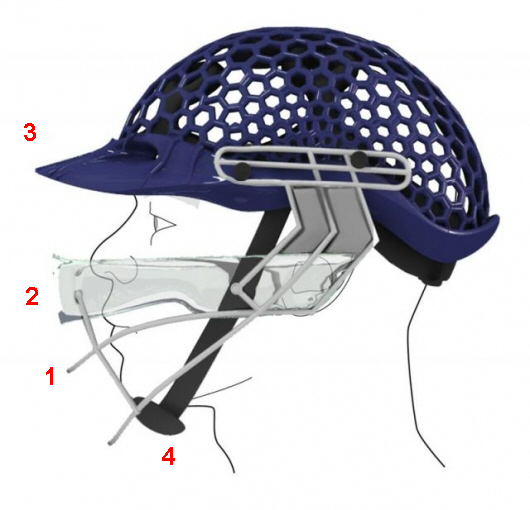
An innovative cricket helmet design.
1. Titanium guard, 2. polycarbonate with film on inner side to
prevent fragments hitting face if shattered
3. ABS solid plastic injection molded with holes to allow maximum
ventilation 4. polyester strap with velcro
Ayrtek filed a patent for a new design in 2009.
This may have led to the helmet seen worn by Michael Carberry from 2013.
The helmet is designed to deflect the ball
and the rigid peak helps to reduce the risk of grille penetration.
It has a liner with an Air Cushion Impact System (ACIS) that can be
inflated or deflated to deliver a perfect fit by pushing buttons on either
side of the helmet.
R.I.P. Phil Hughes 1988-2014
Golf
Golf
Balls
An appendix to the "Rules of Golf" defines that a golf ball must
not weigh more than 45.93 grams (1.620 oz), that its diameter must not be
less than 42.67 mm (1.680 in), and that its shape may not differ
significantly from a symmetric sphere. Like golf clubs, golf
balls are subject to testing and approval by the
Royal and Ancient Golf Club of St Andrews, Scotland and the
United
States Golf Association, and those that do not conform with
the regulations may not be used in competitions (Rule 5-1).
How are golf balls made and what changes to their composition
have been made in recent years?
The first golf balls were made from wood and this continued until
the early 17th century when the featherie ball added a
new and exciting feature to the game of golf. A featherie is a
hand sewn cow hide leather pouch stuffed with chicken or goose
feathers and coated with paint. Because they were hand produced
and this was a time-consuming process the balls were expensive
and consistency was an issue.
In the 1840's the gutta-percha ball
was invented and it was found that indentations in the leather
helped the ball achieve a truer flight. Ever since then
manufacturers intentionally added indentations to the balls and
now the number of indentations is generally quoted in the
publicity surrounding the ball.
Nike and DuPont teamed up to create a new range of golf balls.
The Nike 20XI ball design replaces rubber cores with a highly
engineered, DuPont thermoplastic (HPF 2000 Mg ionomer) resin
developed specifically for use in golf balls. This advanced core
technology makes the 20XI ball faster, and Nike's new design
makes it possible to achieve both greater distance and greater
control.

Surlyn copolymer
According to the
DuPont web site: DuPont Surlyn ionomer resins are a
family of high-performance ethylene copolymers containing acid
groups partially neutralized using metal salts such as zinc,
sodium and others. The result is an ionically strengthened
thermoplastic with enhanced physical properties versus
conventional plastics. The DuPont manufacturing process for
Surlyn® enables highly tailored combinations of properties:
outstanding resilience, broad hardness and stiffness range, and
excellent resistance to cuts and abrasion - all highly desirable
for golf ball applications.
To meet golf manufacturer needs, DuPont offers more than 20 commercial
grades of Surlyn®, plus a number of grades developed to meet
confidential requests.
See their video describing the
Nike golf ball
A review of the chemistry of golf balls and clubs was recently
published in J Chem Educ
2008, (85) 1319.
Golf
Clubs
The shafts of early Golf club woods were made of different types
of wood before taken over by hickory. The varieties of woods
include ash, greenheart, purpleheart, lancewood, lemonwood,
orangewood, and blue-mahoo. In the middle of the 19th century the
shafts were then being replaced by hickory wood. Despite this
strong wood being the primary material, the long-nose club of the
mid nineteenth century was still prone to breaking at the top of
the backswing. The club heads were often made from thorn, apple,
pear, dogwood, beech in the early times until persimmon became
the main material. Golf clubs have been developed and the shafts
are now made of steel, titanium, carbon fiber, or other types of
metals. The shaft is a tapered steel tube or a series of stepped
steel tubes in telescopic fashion. This has helped the accuracy
of golfers. The grips of the clubs are made from leather or
rubber.
From the early 1930s through the 1970s, the shafts of clubs were
made predominantly from steel. Experiments with lighter aluminium
shafts being deemed unsuccessful due to poor torque performance.
Steel has good shaft performance but is quite heavy for the
average player. Replacing steel with graphite reduced the weight
of the club significantly and allowed for the use of longer
shafts.
Golf clubs can be distinguished by their appearance and use in
the game.
Woods
Most 'woods' are made from different metals, although they are
still called 'woods' to denote the general shape and their
intended use on the golf course. Most woods made today have a
graphite shaft and a titanium, composite, or steel head. Woods
are the longest and the most powerful of all the golf clubs.
Today, many metal wood clubfaces (and most driver clubfaces) are constructed
out of titanium. Titanium has a higher strength to weight ratio than steel
and has better corrosion resistance, so it is an ideal metal for golf club
construction. Manufacturers can also make clubheads with greater volume,
which increases the hitting area, and thinner faces, which reduces the weight.
Irons
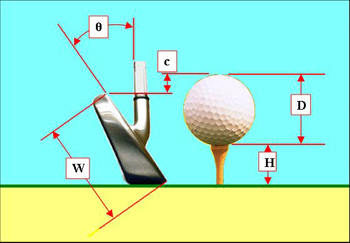
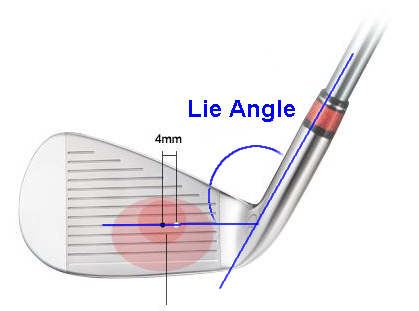
Defining Loft and Lie Angle for Golf Irons
W= clubface width at sweet-spot center, H= tee height, D= golf ball diameter
θ= loft angle
Irons are golf clubs with a flat angled face and a shorter shaft
than a wood, designed for shots approaching the green or from
more difficult lies such as the rough, through or over trees, or
the base of hills. Irons are used during the middle of each hole
off the roughs, fairways or sand traps. There are long irons,
medium irons, and short irons all with flat heads. They are
called irons because they were made of metal.
A recent innovation in the chemistry of alloys has led to what are called
"liquidmetals"
a series of amorphous metal alloys developed by a California Institute of
Technology (Caltech) research team.
Liquidmetal alloys (commercially known as Liquidmetal and Vitreloy) combine
a number of desirable material features, including high tensile strength,
excellent corrosion resistance, very high coefficient of restitution and
excellent anti-wearing characteristics, while being able to be heat-formed
in processes similar to thermoplastics.
One of the first commercial uses of Liquidmetal was in golf clubs,
where the highly elastic metal was used in portions of the face of the club.
These were highly rated by users, but the product was later dropped,
in part because the prototypes shattered after fewer than 40 hits.
Since then, Liquidmetal has appeared in other sports equipment,
including the cores of golf balls, skis, baseball and softball bats,
and tennis racquets.
YouTube clip from Liquidmetal technologies
A recent commercial alloy (Vitreloy 106a) that forms a glass
under less rapid cooling conditions has the composition:
Zr: 58.5 Cu: 15.6 Ni: 12.8 Al: 10.3 Nb: 2.8
Putters
Putters are a special class of clubs with a loft not exceeding
ten degrees (except chippers), designed primarily to roll the
ball along the grass, generally from a point on the putting green
towards the cup. These clubs were originally made of wood but
have now been developed using metals as well. These are the
shortest clubs of the set.
Tennis
Tennis Racquet Strings
A patent for a string
made from gut covered by synthetic fibres was filed in 1982.
How synthetic strings are made
Squash
Why do squash balls
change their properties so much after they have been in use
for a while?
Squash balls are between 39.5 and 40.5 mm in diameter, and have a
mass of 23 to 25 grams. They are made with two pieces of rubber
compound, glued together to form a hollow sphere and buffed to a
matte finish. Different balls are provided for varying
temperature and atmospheric conditions and standards of play:
more experienced players use slow balls that have less bounce
than those used by less experienced players (slower balls tend to
'die' in court corners, rather than 'standing up' to allow easier
shots). Depending on its specific rubber composition, a squash
ball has the property that it bounces more at higher
temperatures. Small coloured dots on the ball indicate its
dynamic level (bounciness), and thus the standard of play for
which it is suited. The recognized speed colours are:
| Colour |
Speed |
Bounce |
| Orange |
Super Slow |
Super low |
| Double yellow |
Slow |
Very low |
| Yellow |
Slow |
Low |
| Green or white |
Medium/slow |
Average |
| Red |
Medium |
High |
| Blue |
Fast |
Very high |
The "double-yellow dot" ball, introduced in 2000, is currently
the competition standard, replacing the earlier "yellow-dot"
ball. There is also an "orange dot" ball, which is even less
bouncy than the "double-yellow dot" ball, intended for use in
areas of high altitude such as Mexico City, Calgary, Denver, and
Johannesburg. The lower atmospheric pressure at these high
altitude regions means that the ball bounces slightly higher,
resulting in the need for such a ball.
The Dunlop squash balls are used in all international
professional competitions. The balls are made of 2 pieces of
extremely durable, high quality rubber compound, glued together
and filled with compressed air. Like compressed air tennis balls,
they lose pressure over time. In addition, as many as 15
different reagents are used, including polymers, fillers,
vulcanising agents, processing aids, and reinforcing materials to
produce the various coloured dot ball types.
Swimming
Competitive
swimwear
Men's swim suits
There was much controversy after the Beijing Olympic Games in
2008, when many Olympic swimmers broke records an unprecedented
number of times using revolutionary swimsuits. It should be noted
that it is rare to break world records, but in 2008, 70 world
records were broken in one year, and 66 Olympic records were
broken in one Olympic Games (there were races in Beijing where
the first 5 finishers were swimming faster than the old world
record). Michael Phelps stated that despite many of his records
having been won in these suits, he might boycott the competition
after his record was beaten by another swimmer with a more
advanced suit.
The Speedo LZR
suit was developed in association with the Australian
Institute of Sport, with the help of Speedo's sponsored athletes.
NASA's wind tunnel testing facilities and Ansys fluid flow
analysis software supported the design. The material used was
woven spandex (elastane) - nylon and polyurethane
Like other suits used for competition, it allows for better
oxygen flow to the muscles, and holds the body in a more
hydrodynamic position, while repelling water and increasing
flexibility. The seams of the suit are ultrasonically welded to
further reduce drag. The suits are manufactured at Petratex, a
textile factory in Paços de Ferreira, Portugal; the
technology is patented in that country. The suit is also 100%
chlorine resistant and quick drying. The suit includes patented
Core Stabilizer and Internal Compression Panels.
The Beijing Olympics proved to be an unprecedented success for
the LZR Racer, with 94% of all swimming races won in the suit.
89% of all medals won at the Beijing Olympics were won by
swimmers wearing the suit. In total 23 out of the 25 world
records broken, were achieved by swimmers competing in the LZR
suit By August 2009, 93 world records were broken by swimmers
wearing a LZR Racer, and 33 of the first 36 Olympic medals have
been won wearing it. Every winner in every men's event in the
Beijing Olympics was wearing this swimsuit.
The number of records broken since the introduction of the
swimsuit prompted the introduction of a new phrase to the sport:
"swimsuit technology doping". In Beijing, Speedo handed out the
suit to any swimmer who wanted to try it and since they were US$
550 each this countered the argument that only rich nations could
afford to use them. However some countries had restrictions due
to sponsorship and initially could not use the suits. The suit
takes around 15 minutes to put on, with the aid of two plastic
bags (one over each foot) and possibly some talcum powder!!
The combined effects of the LZR both compressing the body and
trapping air for buoyancy led to some competitors who used the
LZR to try wearing two or more suits for an increased effect.
Therese Alshammar from Sweden lost her world record in the 50
meter butterfly because she was wearing two swimsuits. However,
all other records set by a swimmer wearing the suit stood as
valid.
The World Swimming Federation's decision to ban hi-tech swimsuits
came amid calls from a number of national swimming federations
who additionally called for all records achieved while wearing
them to be indicated with an asterisk in the record books.
FINA bans hi-tech suits from 2010
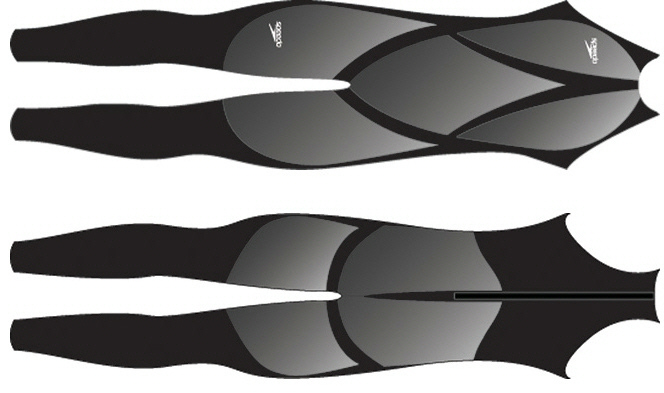
Speedo LZR swimsuit now disallowed from competition swim
meets
As of New Year's Day 2010, men are only allowed to wear suits
from the waist to above the knees. They are also only permitted
to wear one piece of swimwear; they cannot wear speedos
underneath jammers. This law was enacted after the controversy in
the Beijing Olympics and Rome World Championships.
Women's swim suits
Women wear one piece suits with different backs for competition,
though there are two-piece suits that can be worn to compete as
well. Backs vary mainly in strap thickness and geometric design.
Most common styles include: racerback, axel back, corset,
diamondback, and butterfly-back. There are also different style
lengths: three quarter length (reaches the knees), regular length
(shoulders to hips), and bikini style (2 piece). Also as of New
Year's 2010, in competition, women are only allowed to wear suits
that do not go past the knees or shoulders.
Equipment - New materials such as carbon fibre
give great strength three times stronger than steel and
flexibility without the weight. Tennis rackets, golf clubs, poles
or vaulting and Formula 1 racing cars all benefit from this -
giving an improved performance.
Pole
Vaulting
Pole vaulting is a track and field event in which a person uses a
long, flexible pole (which today is usually made either of
fiberglass or carbon fiber) as an aid to leap over a bar. Pole
jumping competitions were known to the ancient Greeks, as well as
the Cretans and Celts. It has been a full medal event at the
Olympic Games since 1896 for men and 2000 for women.
One of the most notable examples of innovation in athletics
equipment is the flexible fibreglass pole. In the early 1960s
performances rapidly improved when the relatively rigid poles
made from steel or bamboo were superseded by highly flexible
poles made of fibreglass or carbon fiber which allowed vaulters
to achieve greater height. Physical attributes such as speed and
agility are essential to pole vaulting effectively, but technical
skill is an equally if not more important element. The object of
pole vaulting is to clear a bar or crossbar supported upon two
uprights (standards) without knocking it down.
Competitive pole vaulting began using solid ash poles. As the
heights attained increased, the bamboo poles gave way to tubular
aluminium, which was tapered at each end. Today's pole vaulters
benefit from poles produced by wrapping pre-cut sheets of
fiberglass that contains resin around a metal pole mandrel, to
produce a slightly pre-bent pole that bends more easily under the
compression caused by an athlete's take-off. The shape of the
fiberglass sheets and the amount of fiberglass used is carefully
planned to provide the desired length and stiffness of pole.
Different fiber types, including carbon-fiber, are used to give
poles specific characteristics intended to promote higher jumps.
In recent years, carbon fiber has been added to the commonly used
E-glass and S-glass materials* in order to create a pole with a
lighter carry weight. Pole vaulters do not need a highly flexible
pole to successfully perform a pole vault (a rigid pole will do),
but they can achieve a considerably greater height through
choosing a pole with an appropriate stiffness. Typical pole
lengths are 4.90-5.40 m for elite male vaulters and 4.30-4.60 m
for elite female vaulters.
*S-Glass is 64-66% Silicon dioxide compare to E-Glass at 52-56%.
S-Glass has no Calcium oxide where E-glass has 16-25%. S-Glass
has more Aluminium oxide at 24-26% where E-Glass is 12-16%.
S-Glass has no Boron where E-glass is 5-10%. S-Glass does have
9-11% Magnesium oxide where E-glass very little. The price of
S-Glass is higher than E-Glass. A possible reason for this is
that S-Glass is processed at a higher temperature than E-glass
and burns through oven liners faster and this replacement cost is
the reason for the higher price. S-Glass looks and handles almost
identically but is made from a higher-strength fiber that gives
about 40% higher tensile strength, 20% higher modulus, and
greater abrasion resistance.
As in the high jump, the landing area was originally a heap of
sawdust or sand where athletes landed on their feet. As
technology enabled higher vaults, mats evolved into bags of large
chunks of foam. Today's high tech mats are foam usually 1-1.5
meters thick. Mats are growing larger in area as well, in order
to minimize any risk of injury. Proper landing technique is on
the back or shoulders. Landing on the feet is avoided, to
eliminate the risk of injury to the lower extremities,
particularly ankle sprains.
Rule changes over the years have resulted in larger landing areas
and additional padding of all hard and unyielding surfaces.
The pole vault crossbar has evolved from a triangular aluminium
bar to a round fiberglass bar with rubber ends. This is balanced
on standards and can be knocked off when it is hit by a pole
vaulter or the pole. Rule changes have led to shorter pegs and
crossbar ends that are semi-circular.
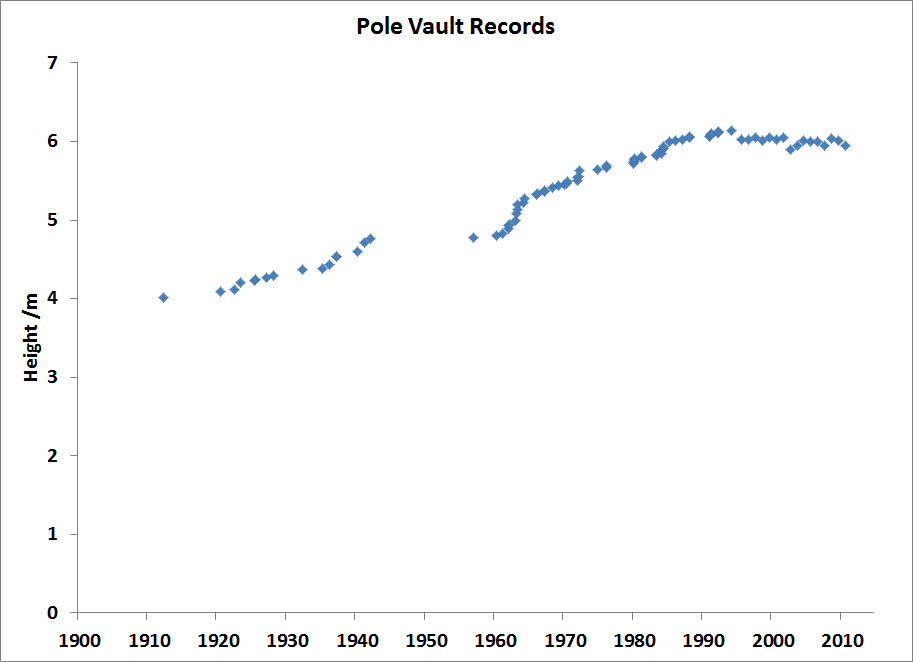
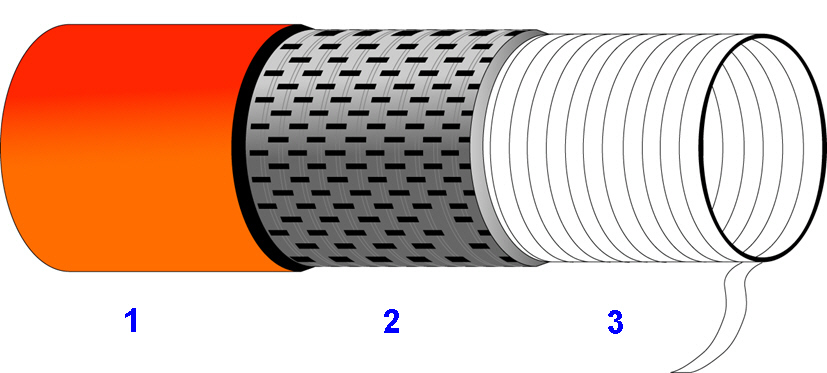
Men's pole vault records and
modern
pole construction
1. Unidirectional carbon fibre / epoxy resin 2. Woven carbon
fibre / epoxy resin 3. Filament wound glass fibre core
Nordic Sport has developed a new pole, which they say is
manufactured from a unique and secret mixture of material.
The mixture is completely different from all other poles on the market.
The Evolution pole has been tested thoroughly with help of both
national and international elite vaulters with very impressive results.
Tests show:
- lighter than a fibreglass pole
- smaller in diameter than a fibreglass pole
- bends easier at the beginning of the vault
- gives a powerful kick-back at the final stage of the vault
Javelin
Throw
The javelin throw is a track and field athletics throwing event
that can trace its origins as a sport back to the Olympic Games
of ancient Greece. In the modem event the javelin must be thrown
using one hand only without the aid of a sling or other throwing
device. Because an athlete can generate a greater release speed
with a lighter implement, the competition rules in the throwing
events always specify a minimum weight for the implement. In the
javelin throw the spear is approximately 2.5 metres in length and
the minimum weight is 800 g for men and 600 g for women. The
javelin thrower gains momentum by running within a predetermined
area.
Rules and Competitions
The size, shape, minimum weight,and center of gravity of the
javelin implement itself are all defined by IAAF rules. In
international competition, men throw a javelin between 2.6 and
2.7 metres in length and (at least) 800 grams in weight, and
women throw a javelin between 2.2 and 2.3 metres in length and
(at least) 600 grams in weight. The javelin is equipped with a
grip, approximately 150 mm wide, made of cord and located at the
javelin's center of gravity (0.9 to 1.06 metres or 0.8 to 0.92
metres from the tip of the javelin for men's and women's
implements, respectively).
The projectile used in javelin consists of three distinct parts:
the head, constructed from a light weight metal; the shaft, made
from carbon fiber or other composite synthetic materials; and the
grip, the portion of the javelin where the object is held by the
thrower prior to delivery. The shaft of the javelin is of hollow
construction to increase the surface area and promote the
greatest flight time. During the first half of the twentieth
century the majority of competitive athletes used javelins made
from Finnish birch wood. Nowadays javelins are constructed from
steel, aluminium alloy, or carbon fibre. A modern javelin differs
from the early designs in that it has a much larger
cross-sectional area. Dick Held is credited with introducing the
'aerodynamic' javelin in the 1950s. His experiments led to the
realisation that it is better for the javelin to have a larger
surface area to augment the javelin's flight capacity through
producing a greater lift.
Javelin Redesign
On April 1, 1986, the governing body (the IAAF Technical
Committee) revised the regulations with respect to the men's
javelin (800 grams (1.76 lb)). They decided to change the rules
for javelin construction because of the increasingly frequent
flat landings and the resulting discussions and protests when
these attempts were declared valid or invalid by competition
judges. In addition, the world record had crept up to a
potentially dangerous level, 104.80 metres by the German Uwe Hohn
in Berlin in 1984 and further increases could result in the
javelin reaching the crowds even in standard athletic stadiums!
The javelin was redesigned so that the centre of gravity was
moved 4 cm forward, further away from the centre of pressure (the
point at which the aerodynamic forces of lift and drag act), so
that the javelin had an increased downward pitching moment. This
would cause the nose to come down earlier, reducing the flight
distance by around 10% and causing the javelin to stick in the
ground more consistently. In 1999, the women's javelin (600 grams
(1.32 lb)) was similarly redesigned.
Modifications that manufacturers made to recover some of the lost
distance, by increasing tail drag (using holes, rough paint or
dimples), were outlawed at the end of 1991. Records made using
such modifications were removed from the record books. The
Finnish javelin thrower Seppo Räty had achieved a world
record of 96.96 metres in 1991 with a modified 'Nemeth' javelin
and this record was nullified. This javelin was designed by
former Olympic Champion, Miklos Nemeth, and had surface roughness
on the tail to reduce aerodynamic drag which was not approved of
by the IAAF. Räty's best record with the current javelin
design was in 1992 (90.60 m), a significant reduction in
distance.
Clothing
Like sports equipment, modern clothing is highly sophisticated
and has a great impact on the feeling of physical comfort in any
kind of sport. Optimal water permeability allows sweat water
droplets out but does not let rain water in. Polyurethane fibres
ensure that the body wear has a perfect fit and offers the
highest comfort because it stretches but still keeps its shape.
Shoes
According to Nick Linthorne at Brunel University:
"For many athletes, running shoes are the most
important piece of their gear. Under IAAF regulations the purpose
of the athlete's shoe is to give protection and stability to the
foot and provide a firm grip on the around. The shoe must not be
constructed so as to give the athlete any additional assistance
and no spring or device of any kind may be incorporated in the
shoe. The design of running shoes has shown a steady evolution
towards minimising the weight of the shoe. A lighter shoe reduces
energy consumption during a distance event, gives a quicker
acceleration and a higher top speed in a sprint and allows a
greater vertical take-off speed to be produced in a high jump or
long jump.
Adidas produces a 'performance plate' that consists of a rigid
carbon fibre plate that is inserted into the sole to stiffen the
shoe. The stiffness of the baseplate of a sprint shoe can have a
significant effect on performance and experiments on sprinters
running over 20 m showed an improvement of just over 1% when
using a stiffening plate in their shoes.
In the high jump, the design of the athlete's
shoe is believed to have a small but significant influence on
performance. In 1957 an athlete using a take off shoe that had a
2-4 cm thick sole set a new world record of 2.16 m. The most
obvious advantage of a built-up shoe is that the athlete's centre
of mass is higher above the ground at take-off and so the height
of the jump is correspondingly increased. Taken to the extreme,
an athlete could wear what is essentially a pair of stilts and
then simply step over the crossbar. The IAAF viewed the built-up
shoe as giving 'unfair assistance' to the athlete and it was
banned shortly after being introduced. However the record was
allowed to stand. Since 1958 the thickness of the sole of the
high jump shoe has been restricted to 13 mm.
Modern Sports shoes are chemical marvels, from the complex
adhesives that ensure the shoe remains intact under extreme
conditions, to the breathing fabrics that keep your feet cool and
dry.
The design
of athletic shoes is one example in which chemistry and
biomechanics are employed to help minimize strain to the lower
body and enhance athletic performance. A shoe should not only
provide support and protection to the foot and ankle, but must
also provide maximum traction and flexibility and, above all, be
lightweight. In track and field sports, for example, a few grams
of extra weight can reduce a runner's speed enough to lose a
race. To this end, manufacturers have introduced ultralight shoes
that use thin, liquid-crystal polymers that act like suspension
bridge cables to resist shoe stretching and maintain stiffness
without adding weight. For cushioning and support, many shoes
employ lightweight gel cavities or air pockets.
Modern athletic shoes have at least four components: the upper,
the insole or insert, the outsole, and the midsole. The upper
holds the shoe together and protects the foot. The insole lies
directly beneath the foot and provides cushioning and arch
support. Insoles are removable in many shoes, and extra insoles
called inserts can be added for comfort or moisture control. The
outsole is the part of the shoe in contact with the ground; it's
usually made of rubber or a synthetic polymer and has treads or
cleats for traction. The midsole is the hidden layer between the
outsole and the insole, mainly designed for shock absorption.
Chemistry of a typical sports shoe
The insole is a thin layer of man-made ethylene vinyl acetate (EVA). The
components of the midsole, which provides the bulk of the cushioning,
will vary among manufacturers. Generally it consists of polyurethane
surrounding another material such as gel or liquid silicone, or polyurethane
foam given a special brand name by the manufacturer. In some cases the
polyurethane may surround capsules of compressed air. Outsoles are usually
made of carbon rubber, which is hard, or blown rubber, a softer type,
although manufacturers use an assortment of materials to produce different
textures on the outsole.
The rest of the covering is usually a synthetic material such as artificial
suede or a nylon weave with plastic slabs or boards supporting the shape.
There may be a leather overlay or nylon overlay with leather attachments.
Cloth is usually limited to the laces fitted through plastic eyelets, and
nails have given way to an adhesive known as cement lasting that bonds the
various components together.
Adidas designed the Lone Star spike running shoe for the 400m
Texan runner
Jeremy Wariner.
The Lone Star featured the first full-length
carbon nanotube reinforced plate and an innovative compression spike.
After studying Wariner's running pattern by high-speed video and pressure
mapping, Adidas' engineers and designers were able to see how Wariner used
each foot as he ran, which in turn enabled them to custom-design a shoe
for his running style. His shoes have differently designed treads for the
right and left foot to assist his cornering.
Stadiums - these days artificial turf, made of
polyolefins to ensure toughness, is used in many stadiums. The
turf is connected to the ground using polyurethane adhesives.
Another type of chemical material, polycarbonates, have become
the preferred material for roofing sporting arenas as they are
lightweight and transparent enabling weird and wonderful
architectural designs. PVC is used in all parts of the stadium
from the flags and banners waved by fans to the seats they sit in
to the field drainage system.
The University of the West Indies (UWI), Mona Campus training facility, used
by Usain Bolt and other Jamaican runners, received a new
Regupol® tartan track in April 2010, with the same Berlin Blue coloured
surface as the Regupol® track at Berlin's Olympic Stadium.
A prefabricated Regupol® elastic layer [4], 10 mm thick, is glued on the
asphalt base [6] (photo at left above). Afterwards the pores of the elastic
layer are sealed with polyurethane [3] and liquid polyurethane [2] is
applied as wear layer to which the
EPDM granules
are added [1].
The top layer [1], usually 3 mm thick, is composed of mixed-size,
spike-resistant EPDM granules embedded into liquid polyurethane.
Copolymerization of ethylene and propylene would result in a saturated
backbone such that sulfur vulcanization could not be used for crosslinking
since no unsaturation exists. To get a sulfur-curable rubber, a non-conjugated
diene is introduced as a third monomer during polymerization. Appropriate
third monomers contain one double bond which takes part in the polymerization
and one which does not. The diene(s) currently used in the manufacture of
EPDM rubbers (ethylene propylene diene Monomer (M-class) rubber) are
DCPD (dicyclopentadiene), ENB (ethylidene norbornene) and
VNB (vinyl norbornene).
International technology gap
A comparison of 2008 Beijing Olympic results for 'Technology
driven sports' such as Track cycling, rowing and sailing with
'Non-technology sports' such as athletics.
| Total medals - 'tech' |
|
Total medals - 'non-tech' |
|
| Great Britain |
24 |
USA |
23 |
| Australia |
7 |
Russia |
18 |
| New Zealand |
6 |
Kenya |
14 |
| Netherlands |
5 |
Jamaica |
11 |
| France |
5 |
Ethiopia |
7 |
| Spain |
5 |
Belarus |
7 |
| Germany |
5 |
Cuba |
5 |
| USA |
5 |
Ukraine |
5 |
| China |
5 |
Australia |
4 |
| Canada |
4 |
Great Britain |
4 |
| Italy |
2 |
|
|
References
"The role
of technology in sporting performance", Prof Claire Davis,
School of Metallurgy and Materials University of Birmingham, UK.
Design and Materials in Athletics. Nick Linthorne shows the changes
technology has made in a number of athletic events and plots the average result
for the 10th best athlete in the world for these events.
Acknowledgements.
Much of the information in these course notes has been sourced
from Wikipedia under the Creative Commons License. Students
taking this course will be expected to contribute to Wikipedia as
a part of their course assignments.
Continue to Medications and Drug
testing or return to
CHEM2402 course outline.

This work is licensed under a Creative Commons
Attribution-ShareAlike 3.0 Unported License.
 Return to Chemistry,
UWI-Mona, Home Page
Created and maintained by Prof. Robert J.
Lancashire,
Return to Chemistry,
UWI-Mona, Home Page
Created and maintained by Prof. Robert J.
Lancashire,
The Department of Chemistry, University of the West Indies,
Mona Campus, Kingston 7, Jamaica
Created September 2011. Links checked and/or
last modified 27th November 2014.
URL
http://wwwchem.uwimona.edu.jm/courses/CHEM2402/Sport/Equipment.html






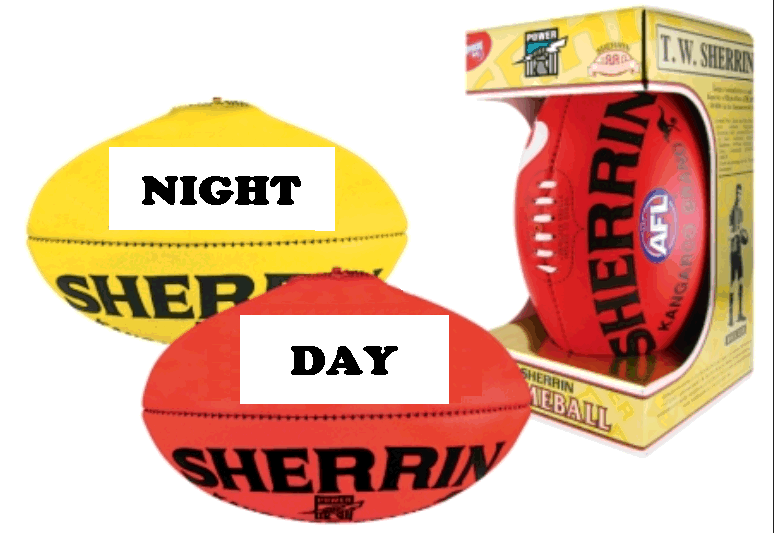
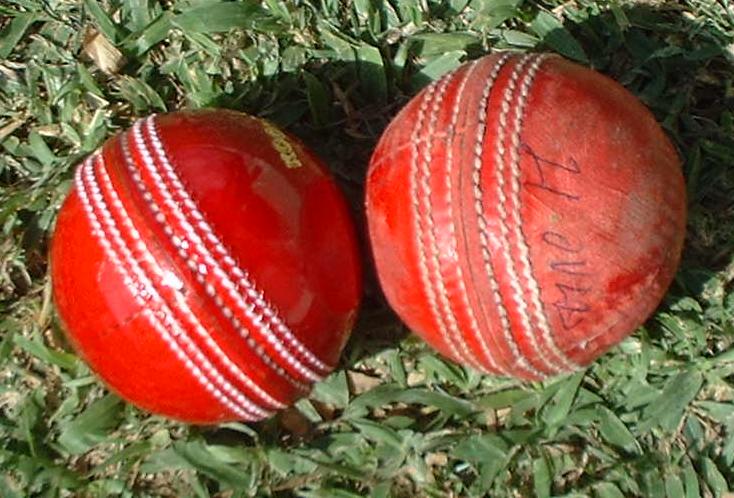
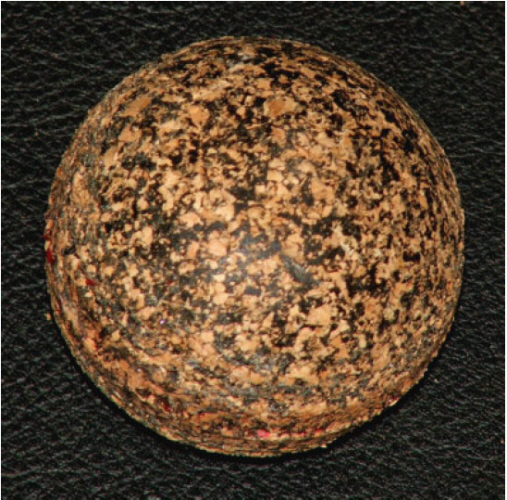









 Return to Chemistry,
UWI-Mona, Home Page
Created and maintained by Prof. Robert J.
Lancashire,
Return to Chemistry,
UWI-Mona, Home Page
Created and maintained by Prof. Robert J.
Lancashire,